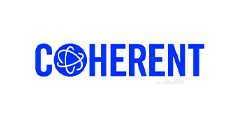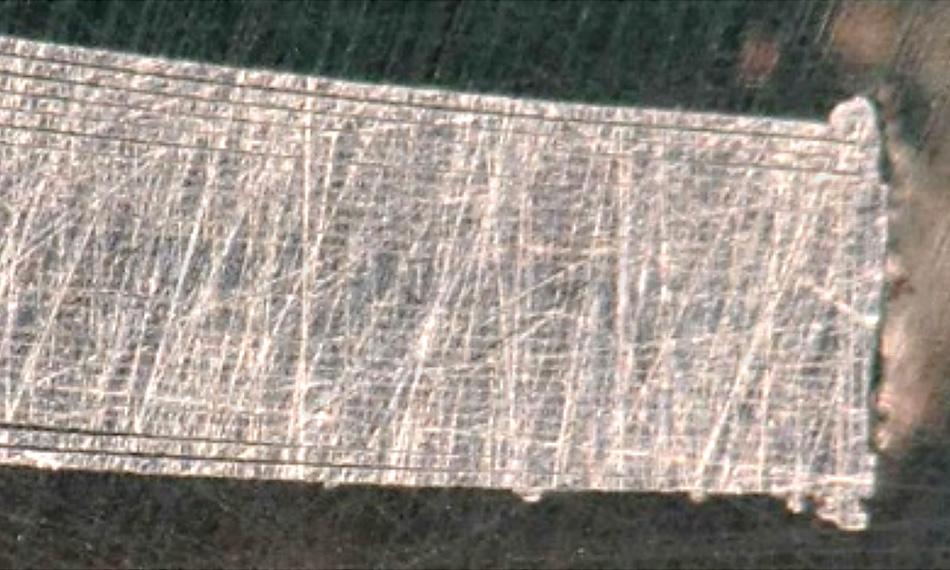Coherent ARM Fiber Laser and SmartWeld+ Surpass Traditional Remote Welding Systems is Reinventing Laser Processing for EVs

The COHERENT ARM fiber laser and SmartWeld+ surpass traditional remote welding systems to meet the most demanding EV battery manufacturing challenges.
July 24, 2024 by Coherent——Demand for EVs has put automakers in a race to reach new levels of manufacturing precision.
Of course, the trend towards higher precision manufacturing has been in place for several decades as cars have become increasingly complex and sophisticated. Lasers have played a key role in this transformation all along. Today they’re routinely used for demanding processes like drilling small, precisely shaped holes for fuel injector nozzles, welding advanced steel alloys, and automatic transmission gear welding.
Often, new methods were required to perform these processes. But in some cases, none of the existing laser-based systems could meet the requirements, and entirely new technology was needed.
This is exactly the case for some of the most demanding EV manufacturing tasks now coming on-line – especially those involved in making the batteries themselves. This is because several of these steps require processing very thin and heat-sensitive materials. And these processes must be performed fast enough, and with sufficiently high yield, to be economically feasible. No laser-based tools could meet all these needs before now.
Coherent is the first laser subsystem manufacturer to develop a new generation of products specifically designed to satisfy the requirements of the most challenging EV battery assembly operations. Specifically, our ARM fiber laser and SmartWeld+ processing head can reduce the number of production steps and deliver better results in some of the most critical tasks involved in assembling pouch and prismatic cell batteries.
Foil cutting and welding
A standout application example is trimming the stack of thin aluminum and copper foils (the electrode stack), and then subsequently connecting these to the battery “tab.” The tab is the conductive terminal that extends from the electrode materials to outside the battery.
Each manufacturer implements these processes differently. The most common method starts by tacking the assembled foil stack together using ultrasonic welding (usually called stack- or pre-welding). This holds the foils together well enough to make them sufficiently mechanically stable for subsequent handling. But it is not meant to be the final weld of the assembly.
The edges of the foil stack are then trimmed with a mechanical blade. Trimming the stack serves several important functions. It provides a uniform edge that is free of irregularities and dimensionally accurate. This will make battery assembly easier and more consistent. Trimming also removes any contaminants from the edges, like oxidation, which will yield better results in subsequent steps.
After cutting and stack welding, the foil stack is robust enough to be moved, if necessary. Typically, for the next step it is transferred to another tool where it is welded to the tab. Various manufacturers utilize either ultrasonic or laser welding for this step.
Unfortunately, there are several drawbacks with this approach. First, ultrasonic stack welding doesn’t always produce a strong enough bond, and most importantly, a bond that penetrates all the way through the stack. This leaves the stack vulnerable to separation or damage when it’s moved.
Ultrasonic stack welding also limits the total number of foils that can be used. This is significant because battery energy storage capacity increases with the number of foils. It is therefore important to battery manufacturers to have the freedom to increase the foil count.
Ultrasonic welding also presents practical limitations. The tools required for it wear rapidly, necessitating frequent replacement. This means production downtime.
Both ultrasonic welding and laser welding have been problematic for foil-to-tab joining, as well. Again, for ultrasonic welding there is a limitation on the penetration depth and, therefore, the number of foils.
Foil-to-tab welds can suffer from cracking and “micro-necking.” This refers to a localized region where the foil has become thinner. This typically happens because tensile stresses created during the welding process stretch the material. But the foil isn’t ductile enough to deform uniformly across its entire width in response to this stress.
Necking is a serious problem because it creates a mechanically weaker zone in the material that can subsequently break or deform further. The reduction in cross-sectional area of the foil also increases its electrical resistance, which can alter battery charging and discharging characteristics.
An innovative approach
Overcoming the limitations of ultrasonic and traditional fiber laser welding in these applications requires a high degree of control over how laser power is delivered to the process – both in how power is distributed spatially and how it varies over time. The level of control required exceeds what can be accomplished with traditional remote laser systems, which are primarily designed for welding larger, thicker parts, such as auto body or powertrain components.
Coherent SmartWeld+ was specifically engineered to provide this level of control and precision. And it reaches its full potential when paired with the adjustable ring mode fiber laser. This is because SmartWeld+ implements a wide variety of “beam wobble” (rapid oscillation) patterns, which distribute the laser energy over an area much larger than the focused laser spot, with the power varied spatially as needed. And the power distribution within ARM beam itself can be dynamically varied to further fine-tune the overall way the laser energy is deposited on the worksurface.
The other key characteristic of this combination is that it’s fast. SmartWeld+ utilizes small, low-inertia mirrors. These cover a smaller field of view but move much faster (as much as 10X) than traditional laser welding heads. Added to this, the ARM laser can be rapidly modulated – both center and ring beam independently. And this modulation can be synchronized very accurately with scan mirror motion. Together, this gives a degree of spatial and temporal control over laser power delivery that has never been available before.
Improved battery welding
The speed advantage of SmartWeld+ can be used to advantage in stack welding, where it enables the cutting and welding operations to be combined into a single process. To accomplish this, it is typically paired with a single-mode fiber laser, like the Coherent HighLight FL. This application doesn’t demand the control achievable with the HighLight FL-ARM, although it does require excellent synchronization between scanner movement and laser power modulation.
To perform the process, the SmartWeld+ rapidly scans the laser beam multiple times across the foil. It is both cut and welded at the same time. This saves time by eliminating a separate process step. And the laser weld is stronger than that achieved using ultrasonic welding. This makes the foil stack easier to handle which can improve overall manufacturing yields.

Coherent SmartWeld+ and the ARM fiber laser can perform stack cutting and welding in a single operation. They deliver a weld that reliably joins the entire foil stack and an evenly cut edge (on the left: foil stack, on the right: laser-cut edge).
The foil-to-tab weld is a more exacting process, and this is where the SmartWeld+ must be combined with a multi-kW single-mode ARM laser (HighLight FL4000CSM-ARM) laser to deliver optimum results. In this case, the Coherent Labs applications team has developed an innovative, patented solution that involves focusing the laser beam on to the edge of the stack from an angle (rather than directly overhead). Then SmartWeld+ rapidly oscillates the beam to cover the entire thickness of the stack and the tab. Overall laser power and power distribution in the ARM beam is varied in synchrony with this beam motion. The success of this method depends on how accurately the edge of the stack has been cut, which is why the precision of the preceding stack welding operation is critical.
Performing the weld at an angle turns out to be key to avoiding micro-necking. This is because it allows the SmartWeld+ and ARM fiber laser to apply the heat to the stack in a way that minimizes thermally induced stress. As a result, the foils don’t pull on themselves during cooling, which is what otherwise causes the micro-necking.
The independent modulation of the ARM beam also produces a better weld joint. Specifically, it provides the control necessary to stabilize the weld “keyhole” resulting in reduced spatter and porosity, and lower defects. The weld joint itself has excellent mechanical strength, which translates into good electrical conductivity. Additionally, laser welding doesn’t produce metal dust, which is a problem with ultrasonic welding.
Besides improving weld quality, the other benefit of the edge weld approach is that it can be used on virtually any thickness stack. This allows battery makers to increase the number of foils to increase cell capacity, if desired.

Coherent SmartWeld+ and the ARM fiber laser eliminate micro-necking and spatter, and produce a large high conductivity weld seam.
Partnering for success
Meeting the challenge of EV manufacturing often requires novel and innovative solutions. Traditional tools which have performed well in the past for other uses sometimes don’t possess the capabilities needed for these highly exacting processes.
The key to success lies in first understanding the unique challenges faced by each application. Coherent offers the technical expertise and commitment to partner with manufacturers to identify and characterize the critical parameters that determine success. For example, in battery foil-to-tab welding, the phenomenon of “micro-necking” wasn’t even widely recognized in the industry before we began working on this application. But our team pinpointed it and developed a solution.
- +1 Like
- Add to Favorites
Recommend
- Coherent Introduces New Ph20 Smartweld+ Laser Processing Heads for Precision Welding at High Speeds in EV Applications
- Coherent SmartWeld+ Processing Head Fills the Gaps in Production Welding
- Coherent Showcased Award-Winning 100G and 400G Coherent Transceivers at OFC 2023
- Coherent Demonstrated Next-generation Transceiver Technology for Digital Coherent Optics in Ultracompact Pluggable form Factors for Disaggregated Systems at ECOC 2023
- SMART Modular Technologies to Present at SNIA Persistent Memory + Computational Storage Summit
- Coherent Introduces I-Temp Micro-Pump Lasers for Extended Temperature Operation in Broadband Optical Access Networks
- Coherent Introduces Powerline FL Series of Cost-effective Laser Subsystems for Precision Welding and Cutting
- Coherent Introduced 2x1000mW Dual-Chip Pump Laser Module for Optical Amplification in Optical Networks
This document is provided by Sekorm Platform for VIP exclusive service. The copyright is owned by Sekorm. Without authorization, any medias, websites or individual are not allowed to reprint. When authorizing the reprint, the link of www.sekorm.com must be indicated.





























































































































































































































































































































































































































































































































































































































































































































































































































































































